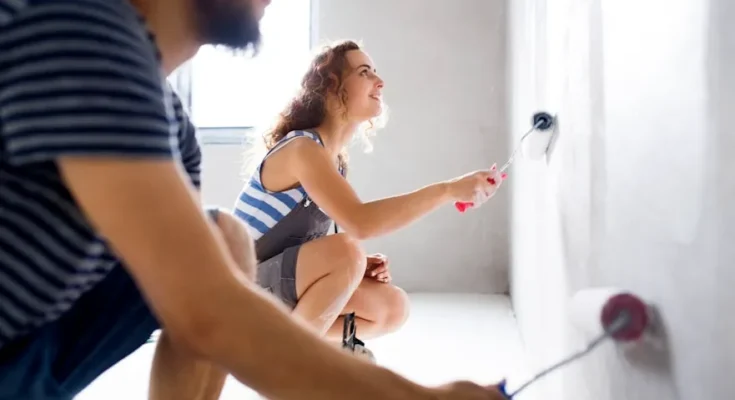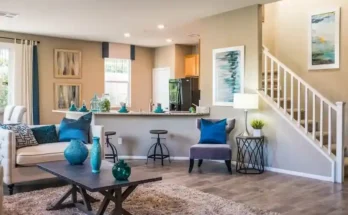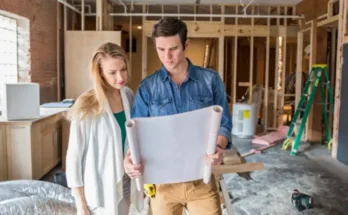There’s something undeniably powerful about walking into a space that feels truly yours. Not just in ownership, but in energy. A home that reflects who you are—your tastes, values, rhythms, and needs—becomes more than just walls and furniture. It becomes a living, evolving reflection of your life.
Home improvement, when seen through this lens, becomes a deeply personal journey. It’s not just about renovating kitchens or repainting walls. It’s about creating environments that comfort, inspire, and support your everyday existence. Whether it’s a cozy nook that makes your morning coffee feel sacred or a decluttered hallway that welcomes you with peace, every thoughtful change adds to the story your home tells.
Finding the Soul of Your Space:
-
Understanding How You Live
The first step in any meaningful home improvement project isn’t in the store aisles or on Pinterest boards—it’s in observation. Before you start buying decor or knocking down walls, pause and ask: How do I actually use this space?
Maybe you dream of an open-plan kitchen but find that most of your meals are shared on the couch. Or perhaps that rarely-used guest room could become your long-overdue art studio. Understanding your natural behaviors helps identify what’s working, what’s not, and what could transform your day-to-day life.
A well-improved home doesn’t just look good—it works for you. It encourages your habits, enhances your lifestyle, and removes friction from your routine.
-
Style Meets Substance
A beautiful home can lift your mood, but beauty that functions is where real transformation begins. A stylish bench with hidden storage, a gallery wall that doubles as acoustic treatment, or light fixtures that balance mood and efficiency—all show that good design marries aesthetic with practicality.
Home improvement is at its best when form follows function. Your personal style should be the backdrop for solutions that solve real-life challenges. The result is a space that not only looks incredible but lives well too.
Breathing New Life Into Old Spaces:
-
Renovation as a Fresh Start
There’s something symbolic about renovating a home. You’re not just upgrading materials—you’re rewriting a story. That cramped bathroom becomes a sanctuary. That outdated kitchen becomes the heart of hospitality. Old spaces, much like old habits, often need intention and effort to become new again.
The beauty of renovation lies in transformation. You take what once was and give it purpose. It’s about respecting the bones of a place while reimagining its potential. And with the right choices, even small updates can yield a massive emotional return.
You don’t need to tear everything down to start fresh. Sometimes, all it takes is a bold color, better lighting, or simply rearranging furniture to breathe new life into your space.
-
Budgeting Without Sacrificing Impact
Not every improvement needs to break the bank. In fact, some of the most effective changes are also the most affordable. Swapping out cabinet hardware, repainting walls, or adding a few plants can change the entire mood of a room.
Smart home improvement isn’t about spending the most—it’s about spending wisely. Prioritize high-impact areas: the ones you use daily or the spots that drain your energy every time you pass them. Focus on upgrades that enhance comfort, efficiency, or aesthetics in a noticeable way. A little intention goes a long way.
The Emotional Architecture of Home:
-
Spaces That Soothe
Our homes are the backdrops of our lives. They witness our mornings, our late nights, our victories and setbacks. It’s no wonder, then, that improving your home can have profound effects on your mental health.
Soft textures in the bedroom can ease anxiety. A clutter-free workspace can boost productivity. Natural light in the living room can fight seasonal blues. Every design decision you make, from the paint on your walls to the shape of your sofa, influences how you feel within your own skin.
Home improvement is, in many ways, emotional engineering. You’re crafting spaces that hold and shape your feelings. And when done with care, your home becomes a sanctuary of wellness.
-
Designing for Connection
It’s easy to focus on aesthetics and forget that the best homes are ones that foster connection. A spacious dining area encourages long conversations. A cozy corner invites shared reading. An open kitchen layout allows you to cook without leaving the conversation.
Improving your home also means thinking about relationships—how the space supports connection with your family, your friends, or even just with yourself. When your environment aligns with your emotional needs, connection happens more easily and meaningfully.
Functionality:
-
Making Every Inch Count
No matter the size of your home, space is precious. Especially in smaller dwellings, maximizing function becomes a creative challenge. Hidden storage, convertible furniture, and vertical organization are just the beginning of how thoughtful design can stretch square footage.
Every space has the potential to serve multiple roles. A hallway can become a library with floating shelves. A windowsill can become a micro-garden. With the right mindset, your home becomes not only a shelter but a playground of possibility.
When you start thinking creatively about function, you stop seeing limits and start seeing opportunities. Every room becomes a chance to improve the way you live.
-
Technology and Smart Living
The modern home isn’t just about brick and mortar—it’s about circuitry and connectivity. Smart home technology has revolutionized how we interact with our spaces. From automated lighting and climate control to voice-activated assistants and security systems, tech integration makes homes more responsive, efficient, and intuitive.
But smart living isn’t just about gadgets. It’s about using technology to simplify life. Whether it’s scheduling lights to simulate natural sunrise or installing sensors that cut energy waste, smart improvements are future-facing investments that pay off in both comfort and cost savings.
Sustainability in Design:
-
Eco-Friendly Choices That Matter
The future of home improvement is green. As awareness grows around climate change and resource scarcity, homeowners are prioritizing sustainability not as a trend, but as a responsibility. Reclaimed wood flooring, low-VOC paints, solar panels, and energy-efficient appliances are now standard considerations.
Sustainable living doesn’t mean sacrificing style. In fact, many eco-friendly materials—like bamboo, cork, and recycled glass—offer unique textures and tones that elevate a home’s design. Being eco-conscious adds layers of intention and story to your space.
Every green choice you make—big or small—ripples outwards. It’s not just your home that benefits, but your community and the planet.
-
Longevity Over Trends
Trendy designs may catch the eye today, but timeless improvements hold value for years to come. Choosing quality materials, classic layouts, and versatile color palettes ensures your home grows with you, not against you.
Longevity is sustainability in disguise. When your home is built to last—both structurally and aesthetically—you reduce waste, save money, and create a space that continues to serve and inspire through every season of life.
Conclusion:
Home improvement is not a one-time project—it’s a living process. As you evolve, so should your space. It’s about aligning your environment with your aspirations, values, and daily rhythms. It’s about crafting a place that holds you gently, functions seamlessly, and reflects your most authentic self.
You don’t need a mansion to feel at peace. You don’t need luxury finishes to feel proud of your home. What you need is intention, care, and a vision for how you want to live.
Because at the end of the day, the most beautiful homes aren’t perfect. They’re personal. And that’s what makes them truly extraordinary.




